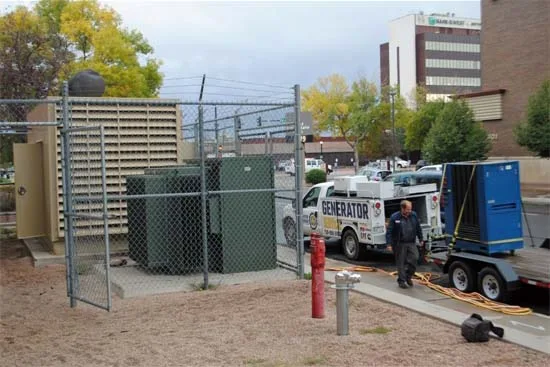Introduction
Industrial and commercial generators serve a variety of roles, from providing hypercritical power to supporting remote operations in fields or mountainous areas. With a wide array of features available, selecting the right generator requires careful consideration. This guide outlines key factors buyers should evaluate before purchasing a generator.
Choosing the Correct Generator for Commercial Applications
System Components
A power system consists of a generator and supporting systems. Proper design, installation, and maintenance are essential for reliable performance. Generators are categorized for indoor or outdoor use, each with unique requirements.
Outdoor Operation

Features
- Sound Attenuated Containers: Include built-in fuel tanks for noise reduction and protection.
- Advanced Equipment: May feature paralleling control panels, transformers, and alarm systems with Wi-Fi and Bluetooth.
Considerations
- Area Preparation: Ensure the generator is located away from explosive gases and installed on a level pad.
- Installation: Involves shipping, loading, and connecting components to the facility grid.
- Permits: Rooftop or restricted-access areas may require local approvals.
Indoor Operation
Features
- Mounted on a skid, these generators require external fuel, cooling, and exhaust systems.
- Common equipment includes:
- Fuel Systems: Main tanks, day tanks, controllers, and piping.
- Cooling Systems: Automated louvers or heat exchangers for ventilation.
- Exhaust Systems: Piping and mufflers to route emissions outside.
- Safety Systems: Fire alarms, sprinklers, and monitoring equipment.
Additional Equipment
- Paralleling control panels and uninterruptible power supplies enhance reliability.
- Advanced configurations may include distribution switches and emergency power setups.
Maintenance and Repair Costs

Importance of Maintenance
- Following manufacturer maintenance schedules ensures reliability and reduces repair costs.
- Maintenance is typically divided into monthly, quarterly, semi-annual, and annual checks.
- Critical facilities often conduct load testing to verify generator performance under varying loads.
Consequences of Neglect
Neglected maintenance can lead to failures during power outages. For example:
- Scenario: A generator fails to start due to a dead battery caused by low electrolyte levels and an unchecked charger circuit breaker.
- Result: Two separate failures occur, both preventable with proper maintenance.
Service Contracts
Partnering with a qualified service provider reduces unscheduled repair costs and enhances system reliability.
Operation Costs During a Power Failure

Primary Costs
- Fuel Consumption: Fuel usage varies with load conditions and is outlined in manufacturer charts (e.g., Cummins Generator Data Sheet).
- Delivery Costs: Fuel delivery can become expensive during long outages, mitigated by installing extra tanks.
Factors Influencing Costs
- Generator Condition: Worn components lead to higher fuel consumption and reduced efficiency.
- Supporting Systems: Failing motors increase wear on the engine and alternator, leading to higher costs.
Summary
Diesel generators remain the most affordable option for acquisition, installation, maintenance, and operation. A properly designed, installed, and maintained power system minimizes operational costs and ensures dependability, making it an invaluable asset for facilities with critical power needs. For assistance in designing or maintaining your generator system, contact Generator Source today.